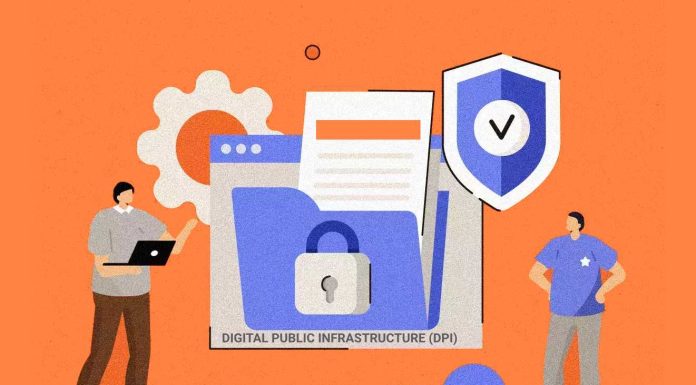In the last decade, the transformative impact of technology has been particularly profound, radically altering the landscape of the public sector. This evolution in governance and operations has been ushered in by key technological advancements, some of which took center stage at global platforms such as the G20 summit. While personal data protection remained the core focus, terms like “AI,” “Cloud,” and “Data Security” frequently emerged, painting a vivid picture of the tech-driven discourse.
However, it's the term “DPI” (Digital Public Infrastructure) that truly distinguishes India's technological prowess. DPI epitomises India's significant strides in establishing a cutting-edge digital infrastructure, which now serves as the bedrock of our burgeoning digital economy.
What does DPI encompass? For those unfamiliar, consider pivotal elements like “Data centers,” “Digital Wallets,” and “Direct Beneficiaries.” Two central pillars of our DPI are Aadhar, the quintessential digital ID of India, and the Unified Payments Interface (UPI). The latter, especially, has transformed the banking landscape by promoting hassle-free transactions across banks, witnessed by its soaring volume and value metrics.
Our digital aspirations don't stop there. The DigiLocker platform, an integrated system adopted by numerous departments and private entities, offers citizens a consolidated cloud space for their myriad documents, be they from government or private sources. From educational certificates to driving licenses, DigiLocker ensures that every essential document can be stored securely. Its unique feature, the ability to share these digital documents officially, eliminates the age-old reliance on physical submissions.
Another innovation that deserves mention is “Meri Pehchan.” Introduced during the Digital India celebrations, it offers a unified authentication platform. This is akin to a national single sign-on system, streamlining access to a plethora of websites. Instead of juggling multiple login credentials for various sites, the National Single Sign-On (NSSO) or Meri Pehchan bridges this divide, offering holistic access to both central and state government portals.
India's commitment to Digital Public Infrastructure is unparalleled globally. A testament to our dedication is the significant progress achieved in the past decade, especially in the last five years. Our mission remains unwavering: to make technology-driven governance a universal reality.
Our roadmap for the future encompasses several strategic pillars:
- Universal Digital Connectivity: Our aim is comprehensive digital access, ensuring that every Indian can tap into our expansive digital infrastructure.
- Seamless Digital Governance: Moving beyond isolated e-governance modules, our focus is to create an integrated digital ecosystem, promoting efficient interactions and reducing redundant data submissions.
- Expanding the Digital Economy: With ambitions to boost our digital economy to $1 trillion in the upcoming years, the digital realm is poised to become a cornerstone of India's economic landscape.
- Incorporating Futuristic Technologies: AI, exemplified by platforms like ChatGPT, along with blockchain and quantum technologies, will significantly mold our digital future.
- Empowering through Skill Development: To sustain our technological advancement, we recognise the imperative to nurture and elevate our talent pool, making India the epicenter of global tech expertise.
- Revising Legal Frameworks: Modernising legislation and fortifying data protection measures will ensure a secure and progressive digital environment.
In my current capacity, I spearhead the ESI Corporation, dedicated to providing insurance to over 3.1 crore workforce. With initiatives like Dhanwantri, we're making leaps in digitising our services, extending benefits like mobile apps and telemedicine platforms to our beneficiaries.
In essence, technology's indomitable march continues, metamorphosing both public and private domains, and India stands poised at the vanguard of this digital revolution.
The author is the Director General, Employees' State Insurance Corporation, Government of India. This article is adapted from his keynote address delivered at VeeamON 2023.











